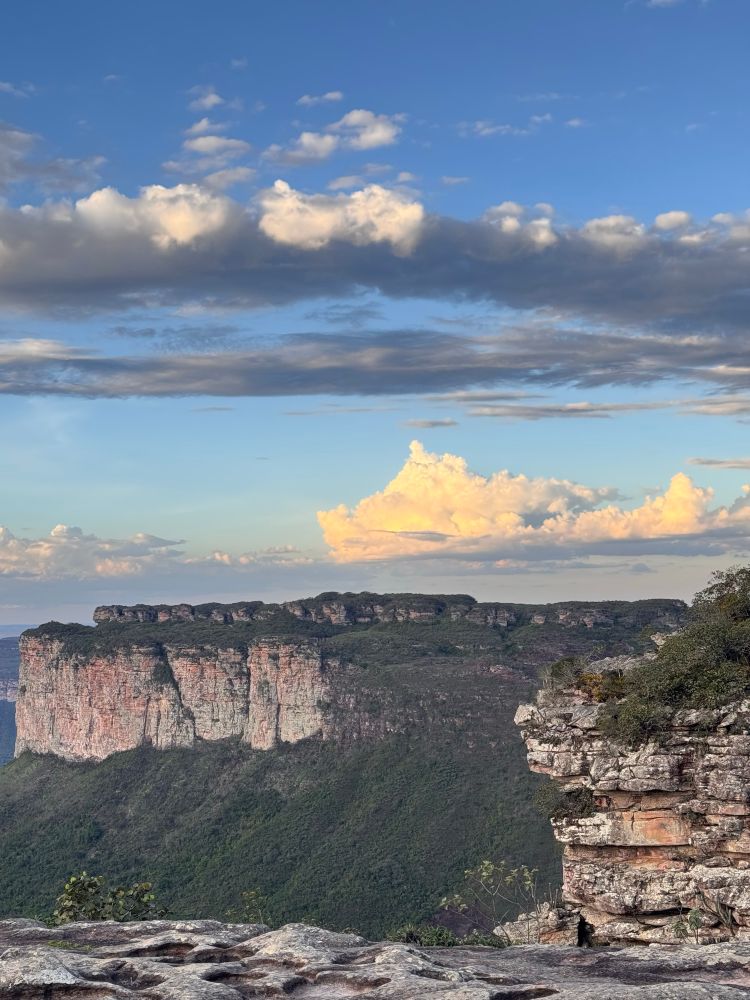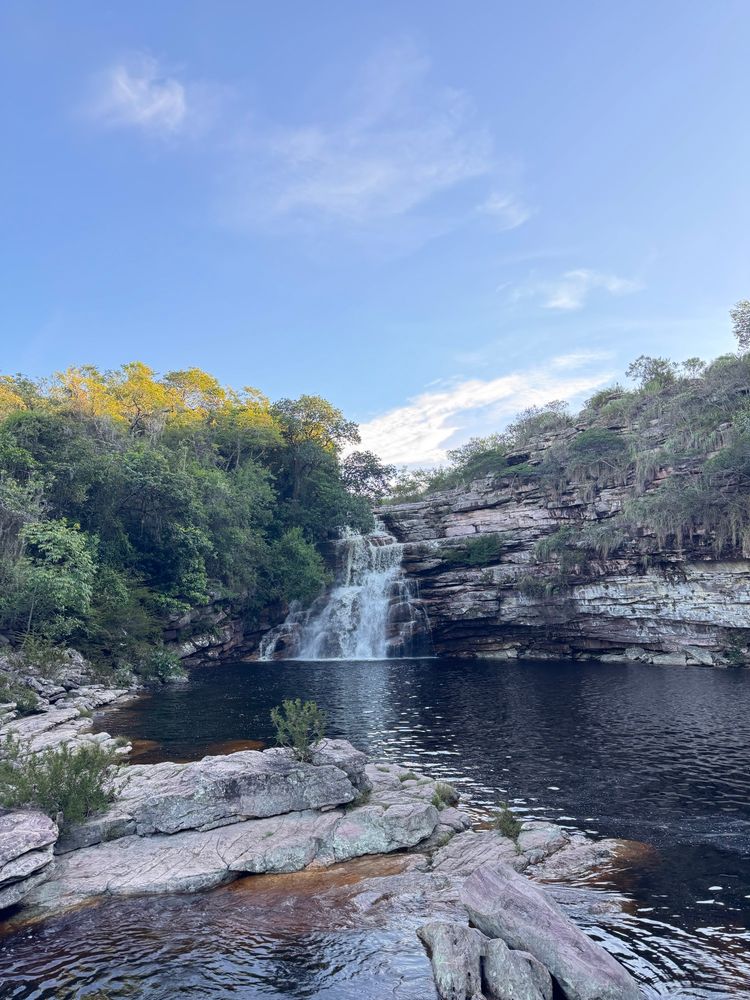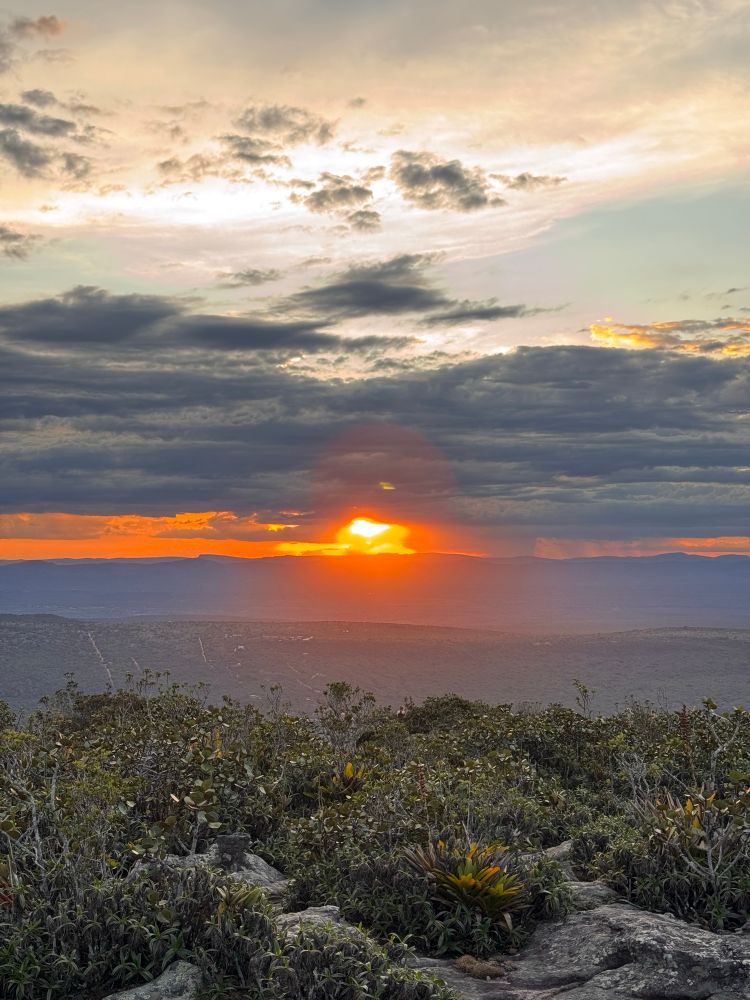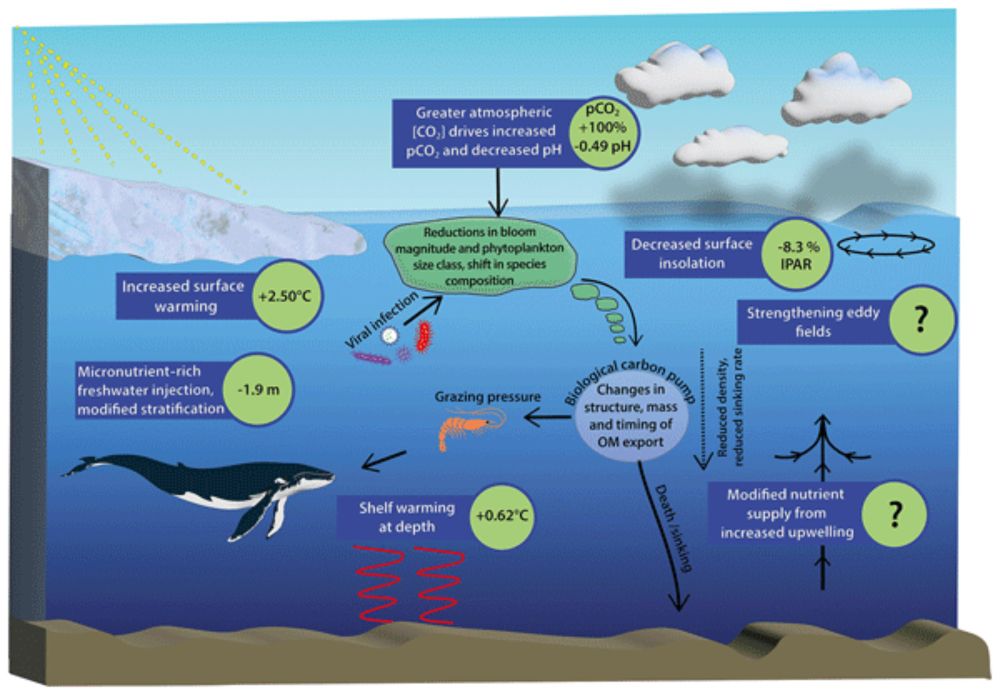I’m looking for a PhD student to join my lab @ NC State starting Fall 2026!
Lots of room to develop projects, esp. around paleoceanography, ocean deoxygenation & foraminiferal ecology. Field, lab & computational angles all possible.
Please share with anyone who might be a good fit!
26.09.2025 17:27 — 👍 16 🔁 15 💬 0 📌 1

Time series of standardized streamflow anomaly for the Ganga River from year 700 to 2020 (derived from a hydrological model and from the Monsoon Asia Drought Atlas built from tree rings). The plot shows mostly balanced wet (blue/green bars) and dry (brown bars) years until the 20th century, when the black moving-average line dips sharply after 1990. The 1991–2020 mean (blue horizontal line) is well below the range of previous 1,300 years. Orange dots mark major documented historical droughts, but the recent drying is clearly the most severe.
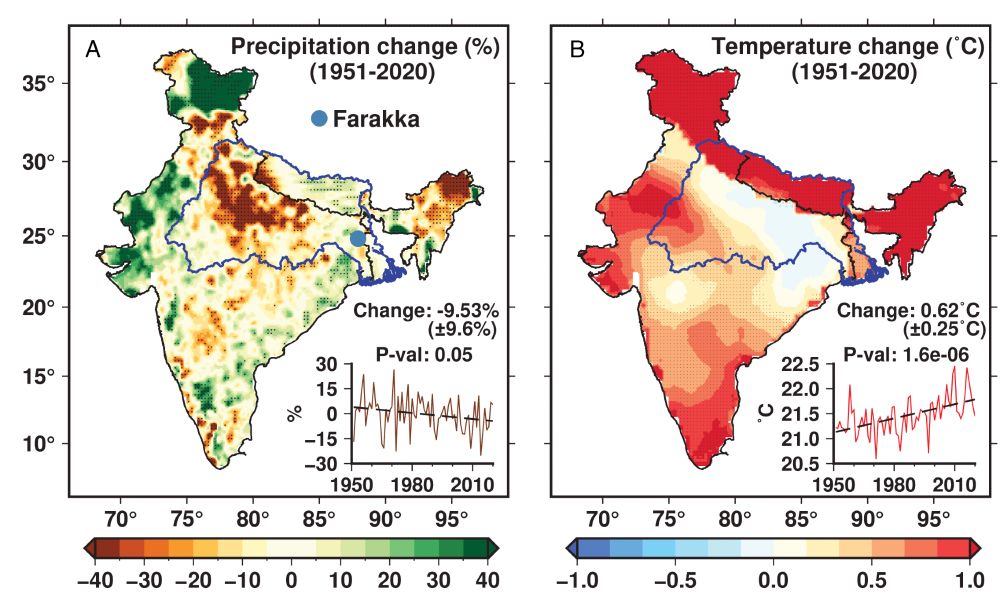
Observed changes in precipitation and temperature between 1951 and 2020. Spatial distribution of change in (A) annual precipitation (%) and (B) annual mean temperature (°C) between 1951 and 2020 based on the Sen’s slope calculation. Grids with statistically significant trends (P <= 0.05), based on the Mann–Kendall test, are highlighted with stippling. The Inset panels in (A) and (B) represent the interannual variability in precipitation anomaly (%) and temperature (°C) averaged
for the Ganga River Basin (blue boundary). The total change in average precipitation and temperature over the GRB during 1951−2020, estimated using the Sen’s slope, is statistically significant (P-value <= 0.05) based on the Mann–Kendall test.
🚨New work🚨 led by Ph.D. student Dipesh Chuphal (IIT Gandhinagar), shows that the recent drying of the Ganga River basin is unprecedented in 1,300 years—more severe than historical famines. This ~multidecadal drying appears forced, but many models do not capture it. ☔️ 🌧️
www.pnas.org/doi/10.1073/...
22.09.2025 19:45 — 👍 29 🔁 10 💬 0 📌 0

Carbonate chemistry fitness landscapes inform diatom resilience to future perturbations
Diatom growth rates are determined by concentrations of CO2 and H+ across broad carbonate chemistry landscapes.
1/n
This study led by @aaronferderer.bsky.social tested how 5 diatom species respond to broad ranges of seawater carbonate conditions. Goal was to determine carbonate chemistry niches and to inform Ocean Alkalinity Enhancement (OAE) and Ocean Acidification (OA)
🌊
www.science.org/doi/10.1126/...
19.09.2025 01:10 — 👍 25 🔁 15 💬 2 📌 1

🌟New GEOTRACES Science Highlight!🌟
Dissolved nickel sources: transformation and sinks in the Arabian Sea 🌊
www.geotraces.org/dissolved-ni...
Paper first author: Nirmalya Malla, CSIR-NIO
#MarineScience #OceanScience #geochemistry
#biogeochemistry @scor-int.bsky.social
17.09.2025 09:00 — 👍 2 🔁 1 💬 0 📌 0

New Mesocosm Study in Gran Canaria
8. September 2025 / Gran Canaria / Kiel. Over the coming weeks, international researchers led by the GEOMAR Helmholtz Centre for Ocean Research Kiel will conduct an experiment in closed marine tanks o...
Our next #mesocosm study has started. Over the coming weeks, international researchers led by GEOMAR will conduct an experiment in closed marine tanks on the coast of Gran Canaria to investigate the effect of various methods of ocean alkalisation on the marine ecosystem
www.geomar.de/en/news/arti...
10.09.2025 11:18 — 👍 16 🔁 8 💬 0 📌 1
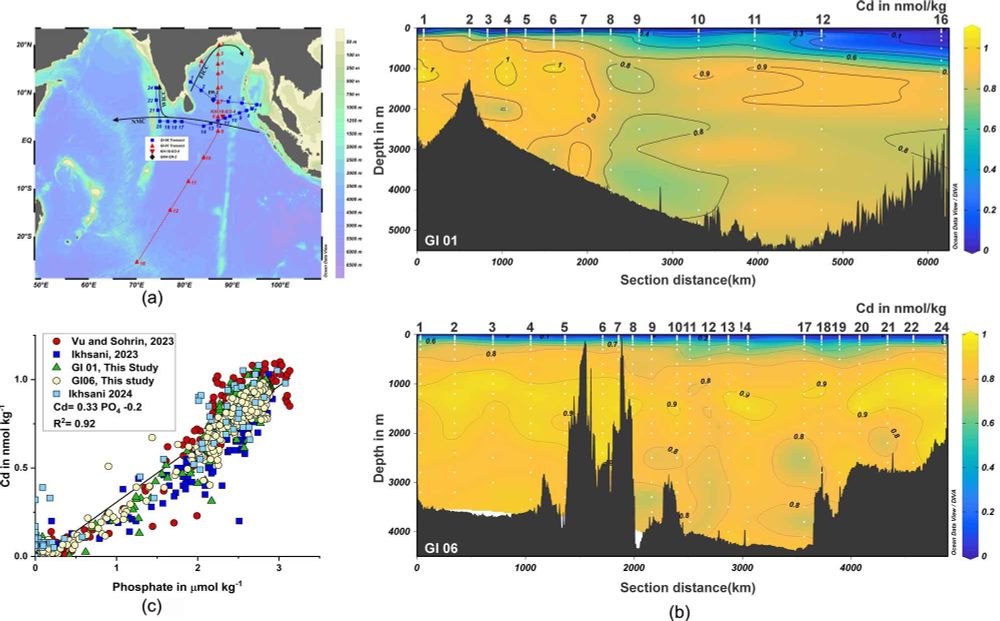
New GEOTRACES Science Highlight! 🌊
Linking cadmium cycling to phosphate dynamics in the Indian Ocean: Evidence from GEOTRACES transects
www.geotraces.org/linking-cadm...
Paper first author: Tapas Kumar Mishra, CSIR-NIO
@scor-int.bsky.social @unoceandecade.bsky.social
#OceanScience #geochemistry
10.09.2025 08:08 — 👍 3 🔁 2 💬 0 📌 0

Almost no clouds to watch this masterpiece in the sky for a total lunar eclipse last night.
08.09.2025 03:16 — 👍 0 🔁 0 💬 0 📌 0
“death by a thousand cuts”
07.09.2025 05:12 — 👍 0 🔁 0 💬 0 📌 0

#ICP16 will be hosted by St Andrews, Scotland @mudwaterclimate.bsky.social thank you.
We had two pitches from Cardiff and St Andrews. 🙏🏼
03.09.2025 10:01 — 👍 16 🔁 5 💬 0 📌 1

🌊📊 #SOOS_DATAMonday | #SOOSmap_Month Spotlight!
Today we’re diving into two powerful datasets available through #SOOSmap from @noaa.gov !
🟦 SOCAT v2024 – The Surface Ocean CO₂ Atlas
➡️ Provides high-quality surface ocean carbon dioxide (CO₂) analysis
🔗https://buff.ly/Gl5Xf4z
27.04.2025 23:01 — 👍 8 🔁 3 💬 1 📌 0

Introducing the "tree ring plot": a new way to visualize global surface temperatures. Each ring is a year, and each colored cell represents a day in global average temperatures (compared to a 1850-1900 preindustrial baseline).
25.04.2025 21:33 — 👍 305 🔁 107 💬 7 📌 4

Bootstrap analysis for the origination rates and extinction rates of calcareous (dotted lines) and agglutinated (dashed lines) foraminifera. (A) Expected (light orange shading) versus actual (dark orange dotted line) calcareous extinction rates, (B) expected (light blue shading) versus actual (dark blue dotted line) calcareous origination rates, (C) expected (light orange shading) versus actual (dark orange dashed line) agglutinated extinction rates and (D) expected (light blue shading) versus actual (dark blue dashed line) agglutinated origination rates. Vertical dashed lines indicate the Big Five mass extinction events; the Phanerozoic time scale is at the bottom of the figure; transitions between calcite and aragonite seas are indicated at the top of the figure and the black gradient bar (middle) represents the approximate duration of the Mesozoic Marine Revolution (MMR). p̂ = origination rate; q̂ = extinction rate.
#WeekendReading: Faulkner et al. (w/
@rowanmartindale.bsky.social;
@chrislowery.bsky.social) on how the test walls of foraminifera change through the Phanerozoic and what might that have to do with ocean chemistry. 🧪⚒️🌊
royalsocietypublishing.org/doi/10.1098/...
18.04.2025 07:22 — 👍 40 🔁 18 💬 2 📌 2
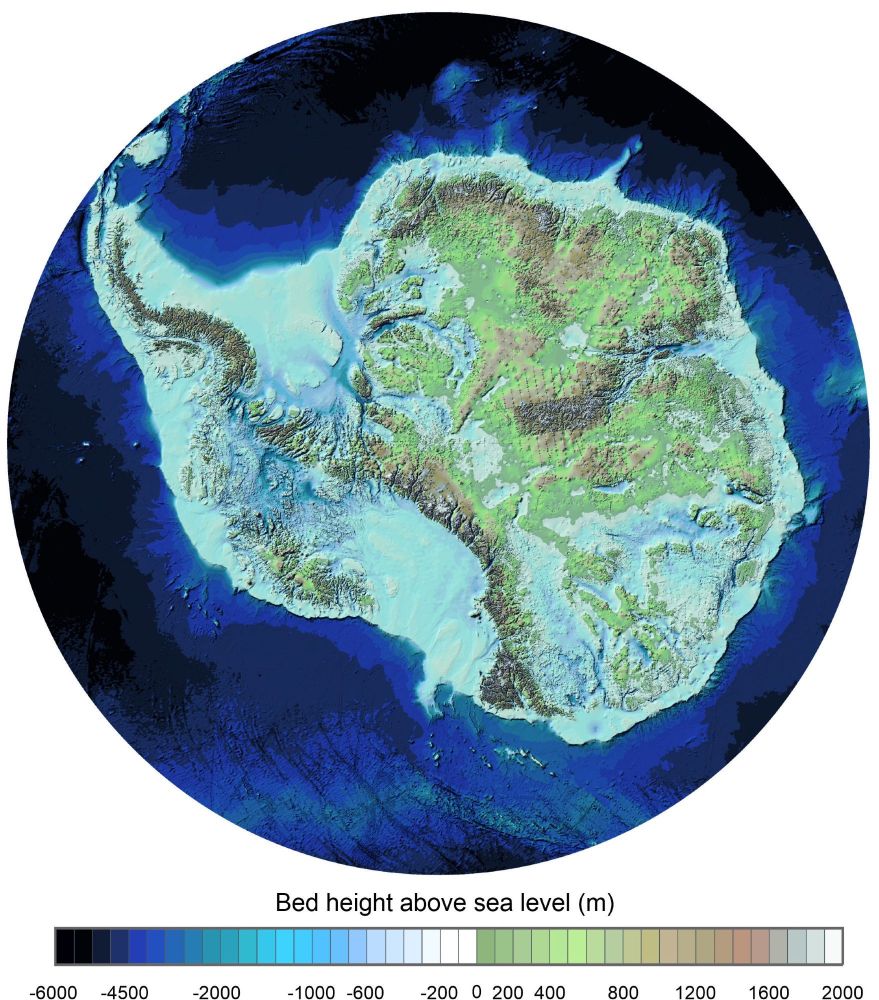
Map Antarctica without ice
Antarctica without ice🧊🧊🧊🧊
#AWI scientists have developed a new map of #Antarctica in collaboration with @bas.ac.uk. 🇦🇶
It shows the landscape beneath the Antarctic ice sheet more precisely than ever before: the topography of the mountains, canyons and depressions.
14.03.2025 11:34 — 👍 69 🔁 27 💬 2 📌 1
Calcium Carbonate to store CO₂ ?
The earth’s oceans contain a great deal of dissolved inorganic carbon (DIC) and a decent concentration of calcium (about 10mM).Furthermore the ocean has a hu...
Does making seashells 🐚 in the ocean to drawdown atmospheric CO₂ sound like a good climate solution to you?
Then you’re the target audience of this blog from @mtyka.bsky.social explaining how precipitation of calcium carbonate to make shells uses bicarbonate and actually releases CO₂. 🌊
12.10.2024 10:38 — 👍 77 🔁 26 💬 8 📌 2
DB is an adventure! Good luck because you will need it (102% sure) 🫠
15.02.2025 15:52 — 👍 0 🔁 0 💬 0 📌 0
Associate Prof @USFCMS. Interested in how tiny amounts of trace metals influence earth system cycling. I tweet many Florida birds. All views are my own. He/him.
Ecologist interested in community dynamics and multiple stressors | DECRA fellow at University of Queensland | Research: https://jamesaorr.github.io | Nature photography: jamesorrphoto.com
Associate Professor | Earth Surface Science Institute | University of Leeds | Geochemistry, Oceans & Sediments | Trace Metals & Carbon | he/him
Organisme public 🇫🇷 de recherche pluridisciplinaire, le Centre national de la recherche scientifique c'est 33 000 personnes qui font avancer la connaissance. #HelloESR
🌊 Researcher in marine chemistry and ecology at CNRS / @exoceanlab.bsky.social / ERC Deep-C PI / Marseille
🚀 Launched in February 2018
🌐 Connecting early-career paleoscientists and researchers
🌎 Part of the @pages-ipo.bsky.social
🦕 Account run by the SC members
www.pastglobalchanges.org/ecn/intro
Yes, I came back! Climate Scientist, Geo. Ed. Researcher
Proud alum of WSU, MS State, and Mansfield U.
#DBER #GER #climate
Intergovernmental Panel on Climate Change
Ocean modeller and marine geochemist at University of Bern. Interested in ocean physics/chemistry and climate change of the past and future.
Assistant Professor of Geology & Paleoclimate @ UMass Boston's School for the Environment. Climate change, nitrogen cycle, carbon cycle, surfing (not necessarily in that order). https://jfarmersalmanac.com
Earth/Ocean Scientist @ UArizona, #Tucson | Originally from #Bengaluru 🇮🇳 | #birds, #geology, #isotopes, mindfulness, #monsoons, #oceans, #paleoclimate, & weird music.
eBird: https://ebird.org/profile/MTM0Njk2MA
Web: thirumalai.geo.arizona.edu
Dr Chalk, destined to be a researcher of carbonates. CO2, & ocean-climate links, resident isotope geochemist @exoceanlab.bsky.social,
@cerege.bsky.social, France.
Equalist, technologist, environmentalist. #climatevegan 🌱.
🇬🇧🤝🇲🇫. 🏳️🌈 but always with the 🏳️⚧️.
Postdoctoral researcher in the Paleo² Lab at The University of Arizona. Interested in past climates 🌎 and old oceans 🌊.
Outdoorsy. Reader. Audiophile. Soccer fan. Cat dad. Opinions subject to change. https://www.ryanglaubke.com
Postdoctoral oceanographer studying the ocean carbon sink 🦈🤿🕹️
🏠 @imev-mer.fr (CNRS-Sorbonne Université) as part of the Horizon Europe @tricuso.bsky.social project
💻 https://louisedelaigue.owlstown.net/
🚀 http://bit.ly/3HWFD5I
I am a good bot posting excerpts from the seminal text by W.S. Broecker and T-H Peng for you. Many oceanographers started their journey of ocean discovery with this text
Ocean scientist at @cambridge-earthsci.bsky.social. Confused by #shells, #oceans and #carbon. More at: https://biomin.esc.cam.ac.uk/
Climate Scientist @metoffice 🌍🌊 |
Exploring AMOC and global ocean circulation |
Views are my own | https://linktr.ee/jonbakerocean
Geochemistry/Paleoclimate, Research Scientist @ LSCE/IPSL, Paris












